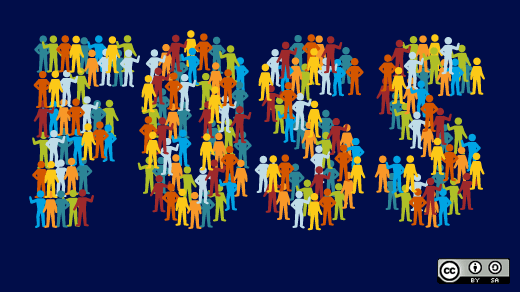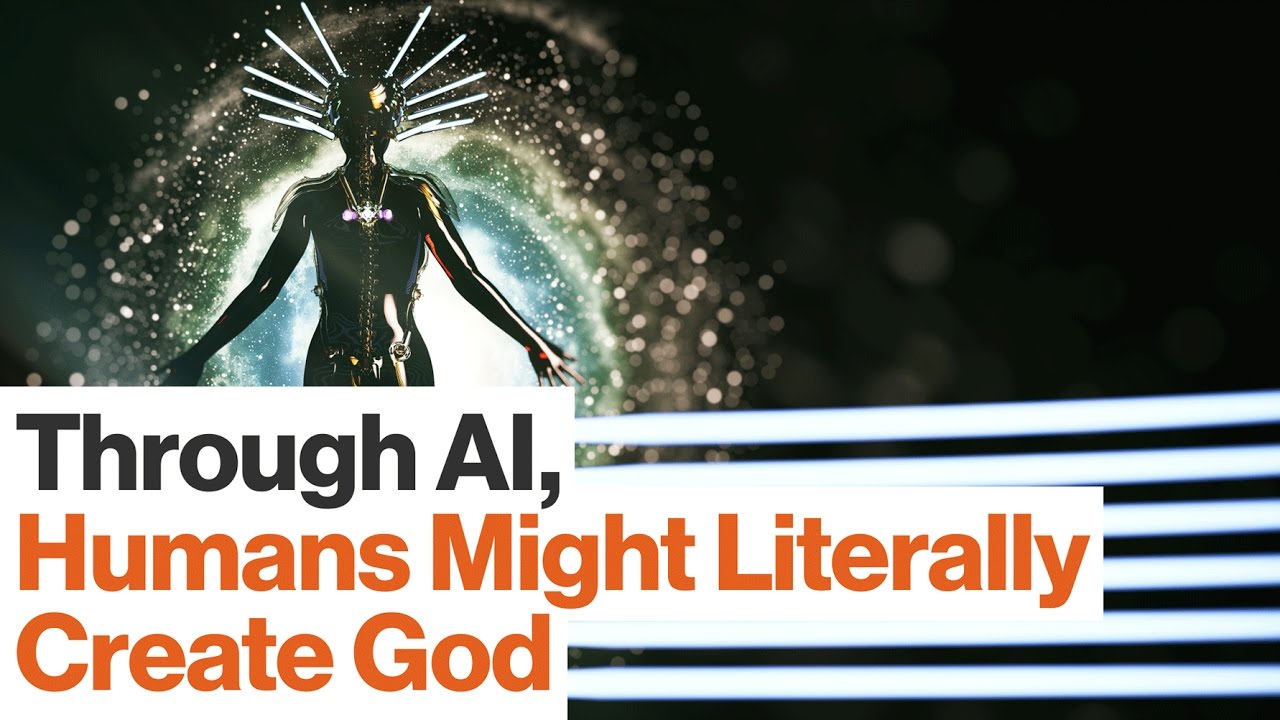Rob Hunter [*]
Introduction
In official, commercial, and activist discourses, networked computing is frequently heralded for establishing a field of inclusive, participatory political activity. It is taken to be the latest iteration of, or a standard-bearer for, “technology”: an autonomous force penetrating the social world, an independent variable whose magnitude may not directly be modified and whose effects are or ought to be welcomed. The internet, its component techniques and infrastructures, and related modalities of computing are often supposed to be accelerating and multiplying various aspects of the ideological lynchpin of the neoliberal order: individual sovereignty.[1] The Internet is heralded as the dawn of a new communication age, one in which democracy is to be reinvigorated and expanded through the publicity and interconnectivity made possible by new forms of networked relations among informed consumers.
Composed of consumer choice, intersubjective rationality, and the activity of the autonomous subject, such sovereignty also forms the basis of many strands of contemporary ethical thought—which has increasingly come to displace rival conceptions of political thought in sectors of the Anglophone academy. In this essay, I focus on two turns and their parallels—the turn to the digital in commerce, politics, and society; and the turn to the ethical in professional and elite thought about how such domains should be ordered. I approach the digital turn through the case of the free and open source software movements. These movements are concerned with sustaining a publicly-available information commons through certain technical and juridical approaches to software development and deployment. The community of free, libre, and open source (FLOSS) developers and maintainers is one of the more consequential spaces in which actors frequently endorse the claim that the digital turn precipitates an unleashing of democratic potential in the form of improved deliberation, equalized access to information, networks, and institutions, and a leveling of hierarchies of authority. I approach the ethical turn through an examination of the political theory of democracy, particularly as it has developed in the work of theorists of deliberative democracy like Jürgen Habermas and John Rawls.
By FLOSS I refer, more or less interchangeably, to software that is licensed such that it may be freely used, modified, and distributed, and whose source code is similarly available so that it may be inspected or changed by anyone (Free Software Foundation 2018). (It stands in contradistinction to “closed source” or proprietary software that is typically produced and sold by large commercial firms.) The agglomeration of “free,” “libre,” and “open source” reflects the multiple ideological geneses of non-proprietary software. Briefly, “free” or “libre” software is so named because, following Stallman’s (2015) original injunction in 1985, the conditions of its distribution forbid rendering the code (or derivative code) proprietary for the sake of maximizing the freedom of downstream coders and users to do as they see fit with it. The signifier “free” primarily connotes the absence of restrictions on use, modification, and distribution, rather than considerations of cost or exchange value. Of crucial importance to the free software movement was the adoption of “copyleft” licensure of software, in which copies of software are freely distributed with the restriction that subsequent users and distributors not impose additional restrictions upon subsequent distribution. As Stallman has noted, copyleft is built on a deliberate contradiction of copyright: “Copyleft uses copyright law, but flips it over to serve the opposite of its usual purpose: instead of a means of privatizing software, it becomes a means of keeping software free” (Stallman 2002, 22). Avowed members of the free software movement also conceive of free software’s importance not just in technical terms but in moral terms as well. For them, the free software ecosystem is a moral-pedagogical space in which values are reproduced and developers’ skills are fostered through unfettered access to free software (Kelty 2008).
“Open source” software derives its name from a push—years after Stallman’s cri de coeur—that stressed non-proprietary software’s potential in the business world. Advocates of the open source framing downplayed free software’s origins in the libertarian-individualist ethos of the early free software movement. They discarded its rhetorics of individual freedom in favor of the invocation of “innovation,” “openness,” and neoliberal subjectivity. Toward the end of the twentieth century, open source activists “partially codified this philosophical frame by establishing a clear priority for pragmatic technical achievement over ideology (which was more central to the culture of the Free Software Foundation)” (Weber 2005, 165). In the current moment, antagonisms between proponents of the respective terminologies are comparatively muted. In many FLOSS developer spaces, the most commonly-avowed view is that the practical upshot of the differences in emphasis between “free” and “open source” is unimportant: the typical user or producer doesn’t care, and the immediate social consequences of the distinction are close to nil. (It is noteworthy that this framing is fully compatible with the self-consciously technicist, pragmatic framing of the open source movement, less so with the ideological commitments of the free software movement. Whether or not it is the case at the micro level that free software and open source software retain meaningfully different political valences is beyond the scope of this essay, although it is possible that voices welcoming an elision of “free” and “open source” do protest too much.)
FLOSS is situated at the intersection of several trends and tendencies. It is a body of technical practice (hacking or coding); it is also a political-ethical formation. FLOSS is an integral component of capitalist software development—but it is also a hobbyist’s toy and a creator’s instrument (Kelty 2008), a would-be entrepreneur’s tool (Weber 2005), and an increasingly essential piece of academic kit (see, e.g., Coleman 2012). A generation of scholarship in anthropology, cultural studies, history, sociology, and other related fields has established that FLOSS is an appropriate object of study not only because its participants are typically invested in the internet-as-emancipatory-technology narrative, but also because free and open source software development has been profoundly consequential for both the cultural and technical character of the present-day information commons.
In the remainder of the essay, I gesture at a critique of this view of the internet’s alleged emancipatory potential by examining its underlying assumptions and the theory of democracy to which it adheres. This theory trades on the idea that democracy is an ethical practice, one that achieves its fullest expression in the absence of coercion and the promotion of deliberative norms. This approach to thinking about democracy has numerous analogues in current debates in political theory and political philosophy. In prevailing models of liberal politics, institutions and ethical constraints are privileged over concepts like organization, contestation, and—above all—the pursuit and exercise of power. Indeed, within contemporary liberal political thought it is sometimes difficult to discern the activity of thinking about politics as such. I do not argue here for the merits of contestatory democracy, nor do I conceal an unease with the depoliticizing tendencies of deliberative democracy, or with the tendency to substitute the ethical for the political. Instead I draw out the theoretical commonalities between the emergence of deliberative democracy and the turn toward the digital in relations of production and reproduction. I suggest that critiques of the shortcomings of liberal thought regarding political activity and political persuasion are also applicable to the social and political claims and propositions that undergird the strategies and rhetorics of FLOSS. The hierarchies of commitment that one finds in contemporary liberalism may be detected in FLOSS thought as well. Liberalism typically prioritizes intersubjectivity over mass political action and contestation. Similarly, FLOSS rhetoric focuses on ethical persuasion rather than the pursuit of influence and social power such that proprietarian computing may be resisted or challenged. Liberalism also prioritizes property relations over other social relations. The FLOSS movement similarly retains a stark commitment to the priority of liberal property relations and to the idea of personal property in digital commodities (Pedersen 2010).
In the context of FLOSS and the information commons, a depoliticized theory of democracy fails to attend to the dynamics of power, and to crucial considerations of political economy in communications and computing. An insistence on conceiving of democracy as an ethical aspiration or as a moral ideal—rather than as a practice of mass politics with a given historical and institutional specificity—serves to obscure crucial features of the internet as a cultural and social phenomenon. It also grants an illusory warrant for ideological claims to the effect that computing and internet-mediated communication constitute meaningful and consequential forms of civic participation and political engagement. As the ethical displaces the political, so the technological displaces the ethical. In the process, the workings of power are obscured, the ideological trappings of technologically-mediated domination are mystified, and the social forms that are peculiar to internet subcultures are naturalized as typifying the form of social organization that all democrats ought to seek after.
In identifying the theoretical affinities between the liberalism of the digital turn and the ethical turn in liberal political theory, I hope to contribute to an enriched, interdisciplinary understanding of the available spaces for investigation and research with respect to emerging trends in digital life. The social relations that are both constituted by and constitutive of the worlds of software, networked communication, and pervasive computing are rightly becoming the objects of sustained study within disparate fields in humanistic disciplines. This essay aims at provoking new questions in such study by examining the theoretical linkages between the digital turn and the ethical turn.
The Digital Turn
The internet—considered in the broadest possible sense, as something comprised of networks and terminals through which various forms of sociality are mediated electronically—attracts, of course, no small amount of academic, elite, and popular attention. A familiar story tends to arise out of these attentions. The digital turn ushers in the promise of digital democracy: an expansion of opportunities for participation in politics (Klein 1999), and a revolutionizing of communications that connects individuals in networks (Castells 2010) of informed and engaged consumers and producers of non-material content (Shirky 2008). Dissent would prove impossible to stifle, as information—endowed with its own virtual, composite personality, and empowered by sophisticated technologies—would both want and be able to be free. “The Net interprets censorship as damage and routes around it” (as cited in Reagle 1999) is a famous—and possibly apocryphal—variant of this piece of folk wisdom. Pervasive networked computing ensures that citizens will be self-mobilizing in their participation in politics and in their scrutiny of corruption and rights abuses. Capital, meanwhile, can anticipate a new suite of needs to be satisfied through informational commodities. The only losers are governments that, despite enthusiastic rhetoric about an “information superhighway,” are unable to keep pace with technological growth, or with popular adoption of decentralized communications media. Their capacities to restrict or control discourse will be crippled; their control over their own populations will diminish in proportion to the growth of electronically-mediated communication.[2]
Much of the excitement over the internet is freighted with neoliberal (Brown 2005) ideology, either in implicit or explicit terms. On this view, liberalism’s focus on the unfettered movement of commodities and the unrestricted consumption activities of individuals will find its final and definitive instantiation in a world of digital objects (with a marginal cost approaching zero) and the satisfaction of consumer needs through novel and innovative patterns of distribution. The cultural commons may be reclaimed through transformations of digital labor—social, collaborative, and remix-friendly (Benkler 2006). Problems of production can be solved through increasingly sophisticated chains of logistics (Bonacich and Wilson 2008), finally fulfilling the unrealized cybernetic dreams of planners and futurists in the twentieth century.[3] Political superintendence of the market—and many other social fields—will be rendered redundant by rapid, unmediated feedback mechanisms linking producers and consumers. This contradictory utopia will achieve a non-coercive panopticon of full information, made possible through the endless concatenation of individual decisions to consume, evaluate, and generate information (Shirky 2008).
This prediction has not been vindicated. Contemporary observers of the internet age do not typically describe it in terms of democratic vistas and cultural efflorescence. They are likelier to examine it in terms of the extension of technologies of control and surveillance, and in terms of the subsumption of sociality under the regime of neoliberal capital accumulation. Indeed, the digital turn follows a trajectory similar to that of the neoliberal turn in governance. The neoliberal turn has enhanced rather than undermined the capacity of the state. Those capacities are directed not at the provision of public goods and social services but rather coercive security and labor discipline. The digital turn’s course has decidedly not been one of individual empowerment and an expansion of the scope of participatory forms of democratic politics. Instead, networked computing is now a profit center for a small number of titanic capitals. Certainly, the revolution in communications technology has influenced social relations. But the political consequences of that influence do not constitute a profound transformation and extension of democracy (Hindman 2008). Nor are the consequences of the revolution in communications uniformly emancipatory (Morozov 2011). More generally, the subsumption of greater swathes of sociality within the logics of computing presents the risk of the enclosure of public information, and of the extension of the capabilities of the powerful to surveil and coerce others while evading public supervision (Drahos 2002, Golumbia 2009, Pasquale 2015).
Extensive critiques of “the Californian ideology” (Barbrook and Cameron 2002), renascent “cyberlibertarianism” (Dahlberg 2010) and its affinities with longstanding currents in right-wing thought (Golumbia 2013), and related ideological formations are all ready to hand. The digital turn is of course not characterized by a singular politics. However, the hegemonic political tendency associated with it may be fairly described as a complex of libertarian ideology, neoliberal political economy, and antistatist rhetoric. The material substrate for this complex is the burgeoning arena of capitals pursuing profits through the exploitation of “digital labor” (Fuchs 2014). Such labor occurs in software development, but also in hardware manufacturing; the buying, selling, and licensing of intellectual property; and the extractive industries providing the necessary mineral ores, rare earth metals, and other primary inputs for the production of computers (on this point see especially Dyer-Witheford 2015). The growth of this sector has been accomplished through the exploitation of racialized and marginalized populations (see, for example, Amrute 2016), the expropriation of the commons through the transformation of public assets into private property, and the decoupling in the public mind of any link between easily accessed electronic media and computing power, on the one hand, and massive power consumption and environmental devastation, on the other.
To the extent that hopes for the emancipatory potential of a cyberlibertarian future have been dashed, enthusiasm for the left-right hybrid politics that first bruited it is still widespread. In areas in which emancipatory hopes remain unchastened by the experience of capital’s colonization of the information commons, that enthusiasm is undiminished. FLOSS movements are important examples of such areas. In FLOSS communities and spaces, left-liberal commitments to social justice causes are frequently melded with a neoliberal faith in decentralized, autonomous activity in the development, deployment, and maintenance of computing processes. When FLOSS activists self-reflexively articulate their political commitments, they adopt rhetorics of democracy and cooperative self-determination that are broadly left-liberal. However, the politics of FLOSS, like hacker politics in general, also betray a right-libertarian fixation on the removal of obstacles to individual wills. The hacker’s political horizon is the unfettering of the socially untethered, electronically empowered self (Borsook 2000). Similarly, the liberal commitments that undergird contemporary theories of “deliberative democracy” are easily adapted to serve libertarian visions of the good society.
The Ethical and the Political
The liberalism of such political theory as is encountered in FLOSS discourse may be fruitfully compared to the turn toward deliberative models of social organization. This turn is characterized by a dual trend in postwar political thought, centrally but not exclusively limited to the North Atlantic academy. It consists of the elision of theoretical distinctions between individual ethical practice and democratic citizenship, while increasing the theoretical gap between agonistic practices—contestation, conflict, direction action—and policy-making within the institutional context of liberal constitutionality. The political is often equated with conflict—and thereby, potentially, violence or coercion. The ethical, by contrast, comes closer to resembling democracy as such. Democracy is, or ought to be, “depoliticized” (Pettit 2004); deliberative democracy, aimed at the realization of ethical consensus, is normatively prior to aggregative democracy or the mere counting of votes. On this view, the historical task of democracy is not to grant greater social purchase to political tendencies or formations; nor does it consist in forging tighter links between decision-making institutions and the popular will. Rather, democracy is a legitimation project, under which the decisions of representative elites are justified in terms of the publicity of the reasons or justifications supplied on their behalf. The uncertain movement between these two poles—conceiving of democracy as a normative ideal, and conceiving of it as a description of adequately legitimated institutions—is hardly unique to contemporary democratic theory. The turn toward the deliberative and the ethical is distinguished by the narrowness of its conception of the democratic—indeed by its insistence that the democratic, properly understood, is characterized by the dampening of political conflict and a tendential movement toward consensus.
Why ought we consider the trajectory of postwar liberal thought in conjunction with the digital turn? First, there are, of course, similarities and continuities between the fortunes of liberal ideology in both the world of software work and the world of academic labor. The former is marked to a much greater extent by a widespread distrust of mechanisms of governance and is indelibly marked by outpourings of an ascendant strain of libertarian triumphalism. Where ideological development in software work has charted a libertarian course, in academic Anglophone political thought it has more closely followed a path of neoliberal restructuring. To the extent that we maintain an interest in the consequences of the digitization of sociality, it is germane and appropriate to consider liberalism in software work and liberalism in professional political theory in tandem. However, there is a rather more important reason to chart the movement of liberal political thought in this context: many of the debates, problematics, and proffered solutions in the politico-ideological discourse in the world of software work are, as it were, always already present in liberal democratic theory. As such, an examination of the ethical turn—liberal democratic theory’s disavowal of contestation, and of the agon that interpellates structures of politics (Mouffe 2005, 80–105)—can aid further, subsequent examinations of the ontological, methodological, and normative presuppositions that inform the self-understanding of formations and tendencies within FLOSS movements. Both FLOSS discourses and professional democratic theory tend to discharge conclusions in favor of a depoliticized form of democracy.
Deliberative democracy’s roots lie in liberal legitimation projects begun in response to challenges from below and outside existing power structures. Despite effacing its own political content, deliberative democracy must nevertheless be understood as a political project. Notable gestures toward the concept may be found in John Rawls’s theory-building project, beginning with A Theory of Justice (1971); and in Jürgen Habermas’s attempts to render the intellectual legacy of the Frankfurt School compatible with postwar liberalism, culminating in Between Facts and Norms (1996). These philosophical moves were being made at the same time as the fragmentation of the postwar political and economic consensus in developed capitalist democracies. Critics have detected a trend toward retrenchment in both currents: the evacuation of political economy—let alone Marxian thought—from critical theory; the accommodation made by Rawls and his epigones with public choice theory and neoliberal economic frames. The turn from contestatory politics in Anglophone political thought was simultaneous with the rise of a sense that the institutional continuity and stability of democracy were in greater need of defense than were demands for political criticism and social transformation. By the end of the postwar boom years, an accommodation with “neoliberal governmentality” (Brown 2015) was under way throughout North Atlantic intellectual life. The horizons of imagined political possibility were contracting at the very conjuncture when labor movements and left political formations foundered in the face of the consolidation of the capitalist restructuring under way since the third quarter of the twentieth century.
Rawls’s account of justified institutions does not place a great emphasis on mass politics; nor does Habermas’s delineation of the boundaries of the ideal circumstances for communication—except insofar as the memory of fascism that Habermas inherited from the Frankfurt School weighs heavily on his forays into democratic theory. Mass politics is an inherently suspect category in Habermas’s thought. It is telling—and by no means surprising—that the two heavyweight theorists of North Atlantic postwar social democracy are primarily concerned with political institutions and with “the ideal speech situation” (Habermas 1996, 322–328) rather than with mass politics. They are both concerned with making justificatory moves rather than with exploring the possibilities and limits to mass politics and collective action. Rawls’s theory of justice describes a technocratic scheme for a minimally redistributive social democratic polity, while Habermas’s oeuvre has increasingly come to serve as the most sophisticated philosophical brief on behalf of the project of European cosmopolitan liberalism. Within the confines of this essay it is impossible to engage in a sustained consideration of the full sweep of Rawls’s political theory, including his conception of an egalitarian and redistributive polity and his constructivist account of political justification; similarly, the survey of Habermas presented here is necessarily compressed and abstracted. I restrict the scope of my critical gestures to the contributions made by Rawls and Habermas to the articulation of a deliberative conception of democracy. In this respect, they were strikingly similar:
Both Rawls and Habermas assert, albeit in different ways, that the aim of democracy is to establish a rational agreement in the public sphere. Their theories differ with respect to the procedures of deliberation that are needed to reach it, but their objective is the same: to reach a consensus, without exclusion, on the ‘common good.’ Although they claim to be pluralist, it is clear that theirs is a pluralism whose legitimacy is only recognized in the private sphere and that it has no constitutive place in the public one. They are adamant that democratic politics requires the elimination of passions from the public sphere. (Mouffe 2013, 55)
In neither Rawls’s nor Habermas’s writings is the theory of deliberative democracy simply the expression of a preference for the procedural over the substantive. It is better understood as a preference for unity and consensus, coupled with a minoritarian suspicion of the institutions and norms of mass electoral democracy. It is true that both their deliberative democratic theories evince considerable concern for the procedures and conditions under which issues are identified, alternatives are articulated, and decisions are made. However, this concern is motivated by a preoccupation with a particular substantive interest: specifically, the reproduction of liberal democratic forms. Such forms are valued not for their own sake—indeed, that would verge on incoherence—but because they are held to secure certain moral ends: respect for individuals, reciprocity of regard or recognition between persons, the banishment of coercion from public life, and so on. The ends of politics are framed in terms of morality—a system of universal duties or ends. The task of political theory is to envision institutions which can secure ends or goods that may be seen as intrinsically desirable. Notions that the political might be an autonomous domain of human activity, or that political theory’s ambit extends beyond making sense of existing configurations of institutions, are discarded. In their place is an approach to political thought rooted in concerns about technologies of governance. Such an approach concerns itself with political disagreement primarily insofar as it is a foreseeable problem that must be managed and contained.
Depoliticized, deliberative democracy may be characterized as one or more of several forms of commitment to an apolitical conception of social organization. It is methodologically individualist: it takes the (adult, sociologically normative and therefore likely white and cis-male) individual person as the appropriate object of analysis and as the denominator to which social structures ultimately reduce. It is often intersubjective in its model of communication: that is, ideas are transmitted by and between individuals, typically or ideally two individuals standing in a relation of uncoerced respect with one another. It is usually deliberative in the kind of decision-making it privileges: authoritative decisions arise not out of majoritarian voting mechanisms or mass expressions of collective will, but rather out of discursive encounters that encourage the formation and exchange of claims whose content conform to specific substantive criteria. It is often predicated on the notion that the most valuable or self-constitutive of individuals’ beliefs and understandings are pre-political: individual rational agents are “self-authenticating sources of valid claims” (Rawls 2001, 23). Their claims are treated as exogenous to the social and political contexts in which they are found. Depoliticized democracy is frequently racialized and erected on a series of assumptions and cultural logics of hierarchy and domination (Mills 1997). Finally, depoliticized democracy insists on a particular hermeneutic horizon: the publicity of reasons. For any claim to be considered credible, and for public exercises to be considered legitimate, they must be comprehensible in terms of the worldviews, held premises, or anterior normative commitments of all persons who might somehow be affected by them.
Theories of deliberative democracy are not merely suspicious of political disagreement—they typically treat it as pathological. Social cleavages over ideology (which may always be reduced to the concatenation of individual deliberations) are evidence either of bad faith argumentation or a failure to apprehend the true nature of the common good. To the extent that deliberative democracy is not nakedly elitist, it ascribes to those democratic polities it considers well-formed a capacity for a peculiar kind of authority. Such collectivities are capable, by virtue of their well-formed deliberative structures, of discharging decisions that are binding precisely because they are correct with reference to standards that are anterior to any dialectic that might take place within the social body itself. Consequently, much depends on the ideological content of those standards.
The concept of public reason has acquired special potency in the hands of Rawls’s legatees in North American analytic political philosophy. Similar in aim to Habermas’s ideal speech situation, the modern idea of public reason is meant to model an ideal state of deliberative democracy. Rawls locates its origins in Rousseau (Rawls 2007, 231). However, it acquires a specifically Kantian conception in his elaboration (Rawls 2001, 91–94), and an extensive literature in analytic political philosophy is devoted to the elaboration of the concept in a Rawlsian mode (for a good recent discussion see Quong 2013). Public reason requires that contested policies’ justifications are comprehensible to those who controvert those policies. More generally, the polity in which the ideal public reason obtains is one in which interlocutors hold themselves to be obliged to share, to the extent possible, the premises from which political reasoning proceeds. Arguments that are deemed to originate from outside the boundaries of public reason cannot serve a legitimating function. Public reason usually finds expression in the writings of liberal theorists as an explanation for why controverted policies or decisions may nevertheless be viewed as substantively appropriate and democratically legitimated.
Proponents of public reason often cast the ideal as a commonplace of reasonable discussion that merely binds interlocutors to deliberate in good faith. However, public reason may also be described as a cudgel with which to police the boundaries of debate. It effectively cedes discursive power to those who controvert public policy in order to control the trajectory of the discourse—if they are possessed of enough social power. Explicitly liberal in its philosophical genealogy, public reason is expressive of liberal democratic theory’s wariness with respect to both radical and reactionary politics. Many liberal theorists are primarily concerned to show how public reason constrains reactionaries from advancing arguments that rest on religious or theological grounds. An insistence on public reasonableness (perhaps framed through an appeal to norms of civility) may also allow the powerful to cavil at challenges to prevailing economic thought as well as to prevailing understandings of the relationship between the public and the religious.
Habermas’s project on the communicative grounds of liberal democracy (1998) reflects a similar commitment to containing disagreement and establishing the parameters when and how citizens may contest political institutions and the rules they produce and enforce. His “discourse principle” (1996, 107) is not unlike Rawls’s conception of public reason in that it is intended to serve as a justificatory ground for deliberations tending toward consensus. According to the discourse principle, a given rule or law is justified if and only if those who are to be affected by it could accept it as the product of a reasonable discourse. Much of Habermas’s work—particularly Between Facts and Norms (1996)—is devoted to establishing the parameters of reasonable discourses. Such cartographies are laid out not with respect to controversies arising out of actually existing politics (such as pan-European integration or the problems of contemporary German right-wing politics). They are instead sited within the coordinates of Habermas’s specification of the linguistic and pragmatic contours of the social world in established constitutional democracies. The practical application of the discourse principle is often recursive, in that the particular implications and the scope of the discourse principle require further elaboration or extension within any given domain of practical activity in which the principle is invoked. Despite its rarefied abstraction, the discourse principle is meant in the final instance to be embedded in real activities and sites of discursive activity. (Habermas’s work in ethics parallels his discourse-theoretic approach to politics. His dialogical principle of universalization holds that moral norms are valid insofar as its observance—and the effects of that observance—would be accepted singly and jointly by all those affected.)
Both Rawls and Habermas’s conceptions of the communicative activity underlying collective decision-making are strongly motivated by concerns for intersubjective ethical concerns. If anything, Habermas’s discourse ethics, and the parallel moves that he makes in his interventions in political thought, are more exacting than Rawls’s conception of public reason, both in terms of the discursive environments that they presuppose as well as the demands that they place upon individual interlocutors. Both thinkers’ views also conceive of political conflict as a field in which ethical questions predominate. Indeed, under these views political antagonism might be seen as pathological, or at least taken to be the locus of a sort of problem situation: If politics is taken to be a search for the common welfare (grounded in commonly-avowed terms), or is held to consist in the provision of public goods whose worth can, in principle, be agreed upon, then it would make sense to think that political antagonism is an ill to be avoided. Politics would then be exceptional, whereas the suspension of political antagonism for the sake of decisive, authoritative decision-making would be the norm. This is the core constitutive contradiction of the theory of deliberative democracy: the priority given to discussion and rationality tends to foreclose the possibility of contestation and disagreement.
If, however, politics is a struggle for power in the pursuit of collective interests, it becomes harder to insist that the task of politics is to smooth over differences, rather than to articulate them and act upon them. Both Rawls and Habermas have been the subjects of extensive critique by proponents of several different perspectives in political theory. Communitarian critics have typically charged Rawls with relying on a too-atomized conception of individual subjects, whose preferences and beliefs are unformed by social, cultural or institutional contexts (Gutmann 1985); similar criticisms have been mounted against Habermas (see, for example, C. Taylor 1989). Both thinkers’ accounts of the foundations of political order fail to acknowledge the politically constitutive aspects of gender and sexuality (Okin 1989, Meehan 1995). From the perspective of a more radical conception of democracy, even Rawls’s later writings in which he claims to offer a constructivist (rather than metaphysical) account of political morality (Rawls 1993) does not necessarily pass muster, particularly given that his theory is fundamentally a brief for liberalism and not for the democratization of society (for elaboration of this claim see Wolin 1996).
Deliberative democracy, considered as a prescriptive model of politics, represents a striking departure both from political thought on the right—typically preoccupied with maintaining cultural logics and preserving existing social hierarchies—and political thought on the left, which often emphasizes contingency, conflict, and the priority of collective action. Both of these latter approaches to politics take social phenomena as subjects of concern in and of themselves, and not merely as intermediate formations which reduce to individual subjectivity. The substitution of the ethical for the political marks an intellectual project that is adequate to the imperatives of a capitalist political economy. The contradictory merger of the ethical anxieties underpinning deliberative democratic theory and liberal democracy’s notional commitment to legitimation through popular sovereignty tends toward quietism and immobilism.
FLOSS and Democracy
The free and open source software movements are cases of distinct importance in the emergence of digital democracy. Their traditions, and many of the actors who participate in them, antedate the digital turn considerably: the free software movement began in earnest in the mid-1980s, while its social and technical roots may be traced further back and are tangled with countercultural trends in computing in the 1970s. The movements display durable commitments to ethical democracy in their rhetoric, their organizational strategies, and the philosophical presuppositions that are revealed in their aims and activities (Coleman 2012).
FLOSS is sited at the intersection of many of liberal democratic theory’s desiderata. These are property, persuasion, rights, and ethics. The movement is a flawed, incompletely successful, but suggestive and instructive attempt at reconfiguring capitalist property relations—importantly, and fatally, from inside of an existing set of capitalist property relations—for the sake of realizing liberal ethical commitments with respect to expression, communication, and above all personal autonomy. Self-conscious hackers in the world of FLOSS conceive of their shared goals as the maximization of individual freedom with respect to the use of computers. Coleman describes how many hackers conceive of this activity in explicitly ethical terms. For them, hacking is a vital expression of individual freedom—simultaneously an aesthetic posture as well as a furtherance of specific ethical projects (such as the dissemination of information, or the empowerment of the alienated subject).
The origins of the free software movement are found in the countercultural currents of computing in the 1970s, when several lines of inquiry and speculation converged: cybernetics, decentralization, critiques of bureaucratic organization, and burgeoning individualist libertarianism. Early hacker values—such as unfettered sharing and collaboration, a suspicion of distant authority given expression through decentralization and redundancy, and the maximization of the latitude of individual coders and users to alter and deploy software as they see fit—might be seen as the outflowing of several political traditions, notably participatory democracy and mutualist forms of anarchism. Certainly, the computing counterculture born in the 1970s was self-consciously opposed to what it saw as the bureaucratized, sclerotic, and conformist culture of major computing firms and research laboratories (Barbrook and Cameron 2002). Richard Stallman’s 1985 declaration of the need for, and the principles underlying, the free development of software is often treated as the locus classicus of the movement (Stallman, The GNU Manifesto 2015). Stallman succeeded in instigating a narrow kind of movement, one whose social specifity it is possible to trace. Its social basis consisted of communities of software developers, analysts, administrators, and hobbyists—in a word, hackers—that shared Stallman’s concerns over the subsumption of software development under the value-expanding imperatives of capital. As they saw it, the values of hacking were threatened by a proprietarian software development model predicated on the enclosure of the intellectual commons.
Democracy, as it is championed by FLOSS advocates, is not necessarily an ideal of well-ordered constitutional forms and institutions whose procedures are grounded in norms of reciprocity and intersubjective rationality. It is characterized by a tension between an enthusiasm for volatile forms of participatory democracy and a tendency toward deference to the competence or charisma (the two are frequently conflated) of leaders. Nevertheless, the parallels between the two political projects—deliberative democracy and hacker liberation under the banner of FLOSS—are striking. Both projects share an emphasis on the persuasion of individuals, such that intersubjective rationality is the test of the permissibility of power arrangements or use restrictions. As such, both projects—insofar as they are to be considered to be interventions in politics—are necessarily self-limiting.
Exponents of digital democracy rely on a conception of democracy that is strikingly similar to the theory of ethical democracy considered above. The constitutive documents and inscriptive commitments of various FLOSS communities bear witness to this. FLOSS communities should attract our interest because they are frequently animated by ethical and political concerns which appear to be liberal—even left-liberal—rather than libertarian. Barbrook and Cameron’s “Californian ideology” is frequently manifested in libertarian rhetorics that tend to have a right-wing grounding. The rise of Bitcoin is also a particularly resonant recent example (Golumbia 2016). The adulation that accompanies the accumulation of wealth in Silicon Valley furnishes a more abstract example of the ideological celebration of acquisitive amour propre in computing’s social relations. The ideological substrate of commercial computing is palpably right-wing, at least in its orientation to political economy. As such it is all the more noteworthy that the ideological commitments of many FLOSS projects appear to be animated by ethico-political concerns that are more typical of left-liberalism, such as: consensus-seeking modes of collective decision-making; recognition of the struggles and claims of members of marginalized or oppressed groups; and the affirmation of differing identifies.
Free software rhetoric relies on concepts like liberty and freedom (Free Software Foundation 2016). It is in this rhetoric that free software’s imbrication within capitalist property relations is most apparent:
Freedom means having control over your own life. If you use a program to carry out activities in your life, your freedom depends on your having control over the program. You deserve to have control over the programs you use, and all the more so when you use them for something important in your life. (Stallman 2015)
Stallman’s equation of freedom with control—self-control—is telling: Copyleft does not subvert copyright; it depends upon it. Hacking is dependent upon the corporate structure of industrial software development. It is embedded in the social matrix of closed-source software production, even though hackers tend to believe that “their expertise will keep them on the upside of the technology curve that protects the best and brightest from proletarianization” (Ross 2009, 168). A dual contradiction is at work here. First, copyleft inverts copyright in order to produce social conditions in which free software production may occur. Second, copyleft nevertheless remains dependent on closed-source software development for its own social reproduction. Without the state power that is necessary for contracts to be enforced, or without the reproduction of technical knowledge that is underwritten by capital’s continued interest in software development, FLOSS loses its social base. Artisanal hacking or digital homesteading could not enter into the void were capitalist computing to suddenly disappear. The decentralized production of software is largely epiphenomenal upon the centralized and highly cooperative models of development and deployment that typify commercial software development. The openness of development stands in uneasy contrast with the hierarchical organization of the management and direction of software firms (Russell 2014).
Capital has accommodated free and open source software with little difficulty, as can be seen in the expansion of the open source software movement. As noted above, many advocates of both the free software and open source software movements frequently aver that their commitments overlap to the point that any differences are largely ones of emphasis. Nevertheless, open source software differs—in an ideal, if not political, sense—from free software in its distinct orientation to the value of freedom: it is something which is to be valued as the absence of the fetters on coding, design, and debugging that characterize proprietary software development. As such open source software trades on an interpretation of freedom that is rather distinct from the ethical individualism of free software. Indeed, it is more recognizably politically adjacent to right-wing libertarianism. This may be seen, for example, in the writings of His influential essay “The Cathedral and the Bazaar” is a paean not to the emancipatory potential of open source software but its adaptability and suitability for large-scale, rapid-turnover software development—and its amenability to the prerogatives of capital (Raymond 2000).
One of the key ethical arguments made by free and open source software advocates rests on an understanding of property that is historically specific. The conception of property deployed within FLOSS is the absolute and total right of owners to dispose of their possessions—a form of property rights that is peculiar to the juridical apparatus of capitalism. There are, of course, superficial resemblances between software license agreements—which curtail the rights of those who buy hardware with pre-installed commercial software, for example—and the seigneurial prerogatives associated with feudalism. However, the specific set of property relations underpinning capitalist software development is also the same set of property relations that are traded upon in FLOSS theory. FLOSS criticism of proprietary software rarely extends to a criticism of private property as such. Ethical arguments for the expansion of personal computing freedoms, made with respect to the prevailing set of property relations, frequently focus on consumption. The focus may be positive: the freedom of the individual finds expression in the autonomy of the rational consumer of commodities. Or the focus may be negative: individual users must eschew a consumerist approach to computing or they will be left at the mercy of corporate owners of proprietary software.
Arguments erected on premises about individual consumption choices are not easily extended to the sphere of collective political action. They do not discharge calls for pressuring political institutions or pursuing public power. The Free Software Foundation, the main organizational node of the free software movement, addresses itself to individual users (and individual capitalist firms) and places its faith in the ersatz property relations made possible by copyleft’s parasitism on copyright. The FSF’s ostensible non-alignment is really complementary, rather than antagonistic with, the alignments of major open source organizations. Organizations associated with the open source software movement are eager to find institutional partners in the business world. It is certainly the case that in the world of commercial computing, the open source approach has been embraced as an effective means for socializing the costs of software production (and the reproduction of software development capacities) while privatizing the monetary rewards that can be realized on the basis of commodified software. Meanwhile, the writings of Stallman and the promotional literature of the Free Software Foundation eschew the kind of broad-based political strategy that their analysis would seem to militate for, one in which FLOSS movements would join up with other social movements. An immobilist tendency toward a single-issue approach to politics is characteristic of FLOSS at large.
One aspect of deliberative democracy—an aspect that is, as we have seen treated as banal in an unproblematic by many theorists of liberalism—that is often given greater emphasis by active proponents of digital democracy is the primacy of liberal property relations. Property relations take on special urgency in the discourse and praxis of free and open source software movements. Particularly in the propaganda and apologia of the open source movement, the personal computer is the ultimate form of personal property. More than that—it is an extension of the self. Computers are intimately enmeshed in human lives, to a degree even greater than was the case thirty years ago. To many hackers, the possibility that the code executed on their machines is beyond their inspection is a violation of their individual autonomy. Tellingly, analogies for this putative loss of freedom take as their postulates the “normal,” extant ways in which owners relate to the commodities they have purchased. (For example, running proprietary code on a computer may be analogized to driving a car whose hood cannot be opened.)
Consider the Debian Social Contract, which encodes a variety of liberal principles as the constitutive political materials of the Debian project, adopted in the wake of a series of controversies and debates about gender imbalance (O’Neil 2009, 129–146). That the project’s constitutive document is self-reflexively liberal is signaled in its very title: it presupposes liberal concerns with the maximization of personal freedom and the minimization of coercion, all under the rubric of cooperation for a shared goal. The Debian Social Contract was the product of internal struggles within the Debian project, which aims to produce a technically sophisticated and yet ethically grounded version of the GNU/Linux operating system. It represents the ascendancy of a tendency within the Debian project that sought to affirm the project’s emancipatory aims. This is not to suggest that, prior to the adoption of the Social Contract, the project was characterized by an uncontested focus on technical expertise, at the direct expense of an emancipatory vision of FLOSS computing; nevertheless, the experience decisively shifted Debian’s trajectory such that it was no longer parallel with that of related projects.
Another example of FLOSS’s fetishism for non-coercive, individual-centered ethics may be found in the emphasis placed on maximizing individual user freedom. The FSF, for example, considers it a violation of user autonomy to make the use of free, open source software conditional by restricting its use—even only notionally—to legal or morally-sanctioned use cases. As is often the case when individualist libertarianism comes into contact with practical politics, an obstinate insistence on abstract principles discharges absurd commitments. The major stakeholders and organizational nodes in the free software movement—the FSF, the GNU development community, and so on—refuse even to censure the use of free software in situations characterized by the restriction or violation of personal freedoms: military computing, governmental surveillance, and so on.
It must also be noted that the hacker ethos is at least partially coterminous with cyberlibertarianism. Found in both is the tendency to see the digital sphere as both the vindication of neoliberal economic precepts as well as the ideal terrain in which to pursue right-wing social projects. From the user’s perspective, cyberlibertarianism is presented as a license to use and appropriate the work of others who have made their works available for such purposes. It may perhaps be said that cyberlibertarianism is the ethos of the alienated monad pursuing jouissance through the acquisition of technical mastery and control over a personal object, the computer.
Persuasion and Contestation
We are now in a position to examine the contradictions in the theory of politics that informs FLOSS activity. These contradictions converge at two distinct—though certainly related—sites. The first site centers on power, and interest aggregation; the second, on property and the claims of users over their machines and data. An elaboration and examination of these contradictions will suggest that, far from overcoming or transcending the contradictions of liberalism as they inhere either in contemporary political practice or in liberal political thought, FLOSS hackers and activists have reproduced them in their practices as well as in their texts.
The first site of contradiction centers on politics. FLOSS advocates adhere to an understanding of politics that emphasizes moral suasion and that valorizes the autonomy of the individual to pursue chosen projects and satisfy their own preferences. This despite the fact that the primary antagonists in the FLOSS political imaginary—corporate owners of IP portfolios, developers and retailers of proprietary software, and policy-makers and bureaucrats—possess considerable political, legal, and social power. FLOSS discourses counterpose to this power, not counterpower but evasion, escape, and exit. Copyleft itself may be characterized as evasive, but more central here is the insistence that FLOSS is an ethical rather than a political project, in which individual developers and users must not be corralled into particular formations that might use their collective strength to demand concessions or transform digitally mediated social relations. This disavowal of politics directly inhibits the articulation of counter-positions and the pursuit of counterpower.
So long as FLOSS as a political orientation remains grounded in a strategic posture of libertarian individualism and interpersonal moral suasion, it will be unable to effectively underwrite demands or place significant pressures on institutions and decision-making bodies. FLOSS political rhetoric trades heavily on tropes of individual sovereignty, egalitarian epistemologies, and participatory modes of decision-making. Such rhetorics align comfortably with the currently prevailing consensus regarding the aims and methods of democratic politics, but when relied on naïvely or uncritically, they place severe limits on the capacity for the FLOSS movement to expand its political horizons, or indeed to assert itself in such a way as to become a force to be reckoned with.
The second site of contradiction is centered on property relations. In the self-reflexive and carefully articulated discourse of FLOSS advocates, persons are treated as ethical agents, but such agents are primarily concerned with questions of the disposition of their property—most importantly, their personal computing devices. Free software advocates, in particular, emphasize the importance of users’ freedoms, but their attentiveness to such freedoms appears to end at the interface between owner and machine. More generally, property relations are foregrounded in FLOSS discourse even as such discourse draws upon and deploys copyleft in order to weaponize intellectual property law against proprietarian use cases.
For so long as FLOSS as a social practice remains centered on copyleft, it will reproduce and reinforce the property relations which sustain a scarcity economy of intellectual creations. Copyleft is commonly understood as an ingenious solution to what is seen as an inherent tendency in the world of software towards restrictions on access, limitations on communication and exchange of information, and the diminution of the informational commons. However, these tendencies are more appropriately conceived of as notably enduring features of the political economy of capitalism itself. Copyleft cannot dismantle a juridical framework heavily weighted in favor of ownership in intellectual property from the inside—no more so than a worker-controlled-and-operated enterprise threatens the circuits of commodity production and exchange that comprise capitalism as a set of social relations. Moreover, major FLOSS advocates—including the FSF and the Open Source Initiative—proudly note the reliance of capitalist firms on open source software in their FAQs, press releases, and media materials. Such a posture—welcoming the embrace of FLOSS the software industry, with its attendant practices of labor discipline and domination, customer and citizen surveillance, and privatization of data—stands in contradiction with putative FLOSS values like collaborative production, code transparency, and user freedom.
The persistence—even, in some respects, the flourishing—of FLOSS in the current moment represents a considerable achievement. Capitalism’s tendency toward crisis continues to impel social relations toward the subsumption of more and more of the social under the rubric of commodity production and exchange. And yet it is still the case that access to computing processes, logics, and resources remains substantially unrestricted by legal or commercial barriers. Much of this must be credited to the efforts of FLOSS activists. The first cohort of FLOSS activists recognized that resisting the commodification of the information commons was a social struggle—not simply a technical challenge—and sought to combat it. That they did so according to the logic of single-issue interest group activism, rather than in solidarity with a broader struggle against commodification, should perhaps not be surprising; in the final quarter of the twentieth century, broad struggles for power and recognition by and on behalf of workers and the poor were at their lowest ebb in a century, and a reconfiguration of elite power in the state and capitalism was well under way. Cross-class, multiracial, and gender-inclusive social movements were losing traction in the face of retrenchment by a newly emboldened ruling class; and the conceptual space occupied by such work was contested. Articulating their interests and claims as participants in liberal interest group politics was by no means the poorest available strategic choice for FLOSS proponents.
The contradictions of such an approach have nevertheless developed apace, such that the current limitations and impasses faced by FLOSS movements appear more or less intractable. Free and open source software is integral to the operations of some of the largest firms in economic history. Facebook (2018), Apple (2018), and Google (Alphabet, Inc. 2018), for example, all proudly declare their support of and involvement in open source development.[4] Millions of coders, hackers, and users can and do participate in widely (if unevenly) distributed networks of software development, debugging, and deployment. It is now a practical possibility for the home user to run and maintain a computer without proprietary software installed on it. Nevertheless, proprietary software development remains a staggeringly profitable undertaking, FLOSS hacking remains socially and technically dependent on closed computing, and the home computing market is utterly dominated by the production and sale of machines that ship with and run software that is opaque—by design and by law—to the user’s inspection and modification. These limitations are compounded by FLOSS movements’ contradictions with respect to property relations and political strategy.
Implications and Further Questions
The paradoxes and contradictions that attend both the practice and theory of digital democracy in the FLOSS movements bear strong family resemblances to the paradoxes and contradictions that inhere in much contemporary liberal political theory. Liberal democratic theory is frequently committed to the melding of a commitment to rational legitimation with the affirmation of the ideal of popular sovereignty; but an insistence on rational authority tends to undermine the insurgent potential of democratic mass action. Similarly, the public avowals of respect for human rights and the value of user freedom that characterize FLOSS rhetoric are in tension with a simultaneous insistence on moral suasion centered on individual subjectivity. What’s more, they are flatly contradicted by the stated commitments by prominent leaders and stakeholders in FLOSS communities in favor of capitalist labor relations and neutrality with respect to the social or moral consequences of the use of FLOSS. Liberal political theory is potentially self-negating to the extent that it discards the political in favor of the ethical. Similarly, FLOSS movements short-circuit much of FLOSS’s potential social value through a studied refusal to consider the merits of collective action or the necessity of social critique.
The disjunctures between the rhetorics and stated goals of FLOSS movements and their actual practices and existing social configurations are deserving of greater attention from a variety of perspectives. I have approached those disjunctures through the lens of political theory, but these phenomena are also deserving of attention within other disciplines. The contradiction between FLOSS’s discursive fealty to the emancipatory potential of software and the dependence of FLOSS upon the property relations of capitalism merits further elaboration and exploration. The digital turn is too easily conflated with the democratization of a social world that is increasingly intermediated by networked computing. The prospects for such an opening up of digital public life remain dim.
_____
Rob Hunter is an independent scholar who holds a PhD in Politics from Princeton University.
Back to the essay
_____
Acknowledgments
[*] I am grateful to the b2o: An Online Journal editorial collective and to two anonymous reviewers for their feedback, suggestions, and criticism. Any and all errors in this article are mine alone. Correspondence should be directed to: jrh@rhunter.org.
_____
Notes
[1] The notion of the digitally-empowered “sovereign individual” is adumbrated at length in an eponymous book by Davidson and Rees-Mogg (1999) that sets forth a right-wing techno-utopian vision of network-mediated politics—a reactionary pendant to liberal optimism about the digital turn. I am grateful to David Golumbia for this reference.
[2] For simultaneous presentations and critiques of these arguments see, for example, Dahlberg and Siapera (2007), Margolis and Moreno-Riaño (2013), Morozov (2013), Taylor (2014), and Tufekci (2017).
[3] See Bernes (2013) for a thorough presentation of the role of logistics in (re)producing social relations in the present moment.
[4] “Google believes that open source is good for everyone. By being open and freely available, it enables and encourages collaboration and the development of technology, solving real world problems” (Alphabet, Inc. 2017).
_____
Works Cited
- Alphabet, Inc. 2018. “Google Open Source.” (Accessed July 31, 2018.)
- Amrute, Sareeta. 2016. Encoding Race, Encoding Class: Indian IT Workers in Berlin. Durham, NC: Duke University Press.
- Apple Inc. 2018. “Open Source.” (Accessed July 31, 2018.)
- Barbrook, Richard, and Andy Cameron. (1995) 2002. “The Californian Ideology.” In Peter Ludlow, ed., Crypto Anarchy, Cyberstates, and Pirate Utopias. Cambridge, MA: The MIT Press. 363–387.
- Benkler, Yochai. 2006. The Wealth of Networks: How Social Production Transforms Markets and Freedom. New Haven, CT: Yale University Press.
- Bernes, Jasper. 2013. “Logistics, Counterlogistics and the Communist Prospect.” Endnotes 3. 170–201.
- Bonacich, Edna, and Jake Wilson. 2008. Getting the Goods: Ports, Labor, and the Logistics Revolution. Ithaca, NY: Cornell University Press.
- Borsook, Paulina. 2000. Cyberselfish: A Critical Romp through the Terribly Libertarian Culture of High Tech. New York: PublicAffairs.
- Brown, Wendy. 2005. “Neoliberalism and the End of Liberal Democracy.” In Edgework: Critical Essays on Knowledge and Politics. Princeton, NJ: Princeton University Press. 37–59.
- Brown, Wendy. 2015. Undoing the Demos: Neoliberalism’s Stealth Revolution. New York: Zone Books.
- Castells, Manuel. 2010. The Rise of The Network Society. Malden, MA: Wiley-Blackwell.
- Coleman, E. Gabriella. 2012. Coding Freedom: The Ethics and Aesthetics of Hacking. Princeton, NJ: Princeton University Press.
- Dahlberg, Lincoln. 2010. “Cyber-Libertarianism 2.0: A Discourse Theory/Critical Political Economy Examination.” Cultural Politics 6:3. 331–356.
- Dahlberg, Lincoln, and Eugenia Siapera. 2007. “Tracing Radical Democracy and the Internet.” In Lincoln Dahlberg and Eugenia Siapera, eds., Radical Democracy and the Internet: Interrogating Theory and Practice. Basingstoke: Palgrave. 1–16.
- Davidson, James Dale, and William Rees-Mogg. 1999. The Sovereign Individual: Mastering the Transition to the Information Age. New York: Touchstone.
- Drahos, Peter. 2002. Information Feudalism: Who Owns the Knowledge Economy? New York: The New Press.
- Dyer-Witheford, Nick. 2015. Cyber-Proletariat: Global Labour in the Digital Vortex. London: Pluto Press.
- Facebook, Inc. 2018. “Facebook Open Source.” (Accessed July 31, 2018.)
- Free Software Foundation. 2018. “What Is Free Software?” (Accessed July 31, 2018.)
- Fuchs, Christian. 2014. Digital Labour and Karl Marx. London: Routledge.
- Golumbia, David. 2009. The Cultural Logic of Computation. Cambridge, MA: Harvard University Press
- Golumbia, David. 2013. “Cyberlibertarianism: The Extremist Foundations of ‘Digital Freedom.’” Uncomputing.
- Golumbia, David. 2016. The Politics of Bitcoin: Software as Right-Wing Extremism. Minneapolis, MN: University of Minnesota Press.
- Gutmann, Amy. 1985. “Communitarian Critics of Liberalism.” Philosophy and Public Affairs 14. 308–322.
- Habermas, Jürgen. 1996. Between Facts and Norms: Contributions to a Discourse Theory of Law and Democracy. Cambridge, MA: MIT Press.
- Habermas, Jürgen. 1998. The Inclusion of the Other. Edited by Ciarin P. Cronin and Pablo De Greiff. Cambridge, MA: MIT Press.
- Hindman, Matthew. 2008. The Myth of Digital Democracy. Princeton, NJ: Princeton University Press.
- Kelty, Christopher M. 2008. Two Bits: The Cultural Significance of Free Software. Durham, NC: Duke University Press.
- Klein, Hans. 1999. “Tocqueville in Cyberspace: Using the Internet for Citizens Associations.” Technology and Society 15. 213–220.
- Laclau, Ernesto, and Chantal Mouffe. 2014. Hegemony and Socialist Strategy: Towards a Radical Democratic Politics. London: Verso.
- Margolis, Michael, and Gerson Moreno-Riaño. 2013. The Prospect of Internet Democracy. Farnham: Ashgate.
- Meehan, Johanna, ed. 1995. Feminists Read Habermas. New York: Routledge.
- Mills, Charles W. 1997. The Racial Contract. Ithaca, NY: Cornell University Press.
- Morozov, Evgeny. 2011. The Net Delusion: The Dark Side of Internet Freedom. New York: PublicAffairs.
- Morozov, Evgeny. 2013. To Save Everything, Click Here: The Folly of Technological Solutionism. New York: PublicAffairs.
- Mouffe, Chantal. 2005. The Democratic Paradox. London: Verso.
- Mouffe, Chantal. 2013. Agonistics: Thinking the World Politically. London: Verso.
- Okin, Susan Moller. 1989. “Justice as Fairness, For Whom?” In Justice, Gender and the Family. New York: Basic Books. 89–109.
- O’Neil, Mathieu. 2009. Cyberchiefs: Autonomy and Authority in Online Tribes. London: Pluto Press.
- Pasquale, Frank. 2015. The Black Box Society: The Secret Algorithms That Control Money and Information. Cambridge, MA: Harvard University Press.
- Pedersen, J. Martin. 2010. “Introduction: Property, Commoning and the Politics of Free Software.” The Commoner 14 (Winter). 8–48.
- Pettit, Philip. 2004. “Depoliticizing Democracy.” Ratio Juris 17:1. 52–65.
- Quong, Jonathan. 2013. “On the Idea of Public Reason.” In The Blackwell Companion to Rawls, edited by John Mandle and David A. Reidy. Oxford: Wiley-Blackwell. 265–280.
- Rawls, John. 1971. A Theory of Justice. Cambridge, MA: Harvard University Press.
- Rawls, John. 1993. Political Liberalism. New York: Columbia University Press.
- Rawls, John. 2001. Justice as Fairness: A Restatement. Cambridge, MA: Harvard University Press.
- Rawls, John. 2007. Lectures in the History of Political Philosophy. Cambridge, MA: The Belknap Press of Harvard University Press.
- Raymond, Eric S. 2000. The Cathedral and the Bazaar. Self-published.
- Reagle, Joseph. 1999. “Why the Internet Is Good: Community Governance That Works Well.” Berkman Center.
- Ross, Andrew. 2009. Nice Work If You Can Get It: Life and Labor in Precarious Times. New York: New York University Press.
- Russell, Andrew L. 2014. Open Standards and the Digital Age. New York, NY: Cambridge University Press.
- Shirky, Clay. 2008. Here Comes Everybody: The Power of Organizing Without Organizations. London: Penguin.
- Stallman, Richard M. 2002. Free Software, Free Society: Selected Essays of Richard M. Stallman. Edited by Joshua Gay. Boston: GNU Press.
- Stallman, Richard M. 2015. “Free Software Is Even More Important Now.” GNU.org.
- Stallman, Richard M. 2015. “The GNU Manifesto.” GNU.org.
- Taylor, Astra. 2014. The People’s Platform: Taking Back Power and Culture in the Digital Age . New York: Metropolitan Books.
- Taylor, Charles. 1989. Sources of the Self. Cambridge, MA: Harvard University Press.
- Tufekci, Zeynep. 2017. Twitter and Tear Gas: The Power and Fragility of Networked Protest. New Haven, CT: Yale University Press.
- Weber, Steven. 2005. The Success of Open Source. Cambridge, MA: Harvard University Press.
- Wolin, Sheldon. 1996. “The Liberal/Democratic Divide: On Rawls’s Political Liberalism.” Political Theory 24. 97–119.
















